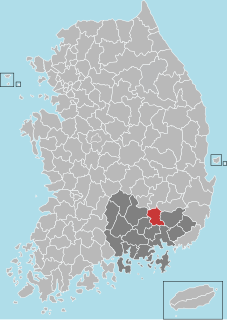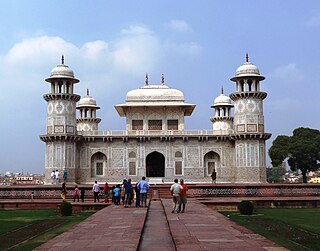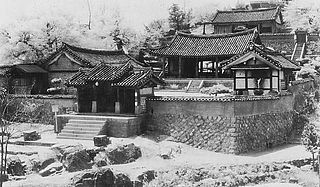This article needs additional citations for verification .(June 2019) (Learn how and when to remove this template message) |
| Bihwa Gaya | |
| Hangul | 비화가야 |
|---|---|
| Hanja | 非火伽倻 |
| Revised Romanization | Bihwa Gaya |
| McCune–Reischauer | Pihwa Kaya |
Part of a series on the | ||||||||
|---|---|---|---|---|---|---|---|---|
| History of Korea | ||||||||
 | ||||||||
| Prehistory | ||||||||
| Ancient | ||||||||
| ||||||||
| Proto–Three Kingdoms | ||||||||
| Three Kingdoms | ||||||||
| ||||||||
| North–South States | ||||||||
| ||||||||
| Later Three Kingdoms | ||||||||
| ||||||||
| Unitary dynastic period | ||||||||
| ||||||||
| Colonial period | ||||||||
| ||||||||
| Division of Korea | ||||||||
| ||||||||
| By topic | ||||||||
| Timeline | ||||||||
Bihwa Gaya, also known as Bijabal in Japanese records of the time, was one of the member states of the Gaya confederacy during the Three Kingdoms period of Korea. It was based near the modern-day city center of Changnyeong County in South Gyeongsang province, South Korea. It was conquered by Silla in the 6th century AD, some time before 555. [1]

Gaya was a Korean confederacy of territorial polities in the Nakdong River basin of southern Korea, growing out of the Byeonhan confederacy of the Samhan period.

The Three Kingdoms of Korea refers to the three kingdoms of Baekje, Silla and Goguryeo. Goguryeo was later known as Goryeo, from which the modern name Korea is derived. The Three Kingdoms period is defined as being from 57 BC to 668 AD.

Changnyeong County is a county in South Gyeongsang Province, South Korea.
Bihwa Gaya is mentioned in the Goryeo Saryak and under the name Hijiho(比自㶱, Korean Revised Romanization: Bijabal) in the Japanese chronicle Nihonshoki . It may have arisen from the 3rd century Jinhan state of Bulsaguk (불사국, 不斯國) which was probably also located in modern-day Changnyeong. Archeological evidence suggests a close relationship between Bihwa Gaya and nearby Silla, although as part of the Gaya confederacy, Bihwa would frequently have been at war with Silla.
Jinhan was a loose confederacy of chiefdoms that existed from around the 1st century BC to the 4th century AD in the southern Korean Peninsula, to the east of the Nakdong River valley, Gyeongsang Province. Jinhan was one of the Samhan, along with Byeonhan and Mahan. Apparently descending from the Jin state of southern Korea, Jinhan was absorbed by the later Silla, one of the Three Kingdoms of Korea.
The royal tombs of Bihwa Gaya are located in Gyo-dong, Changnyeong-eup, in Changnyeong County. Some of these tombs were excavated during the colonial period in 1918, but all records of that excavation have since been lost. In 1973, a team of researchers from Busan's Dong-A University excavated several remaining tombs. These tombs appear to have been constructed in the 5th century AD. Some of them show indications of the live burial of members of the royal household. In 1996, a museum focusing on the relics of the Bihwa Gaya period opened adjacent to the tombs.

A tomb is a repository for the remains of the dead. It is generally any structurally enclosed interment space or burial chamber, of varying sizes. Placing a corpse into a tomb can be called immurement, and is a method of final disposition, as an alternative to for example cremation or burial.

Japanese Korea refers to the period when Korea was under Japanese rule, between 1910 and 1945.

Busan, formerly Romanized as Pusan and now officially Busan Metropolitan City, is South Korea's second most-populous city after Seoul, with a population of over 3.5 million inhabitants. It is the economic, cultural and educational center of southeastern Korea, with its port—Korea's busiest and the fifth-busiest in the world —only about 120 miles (190 km) from the Japanese islands of Kyushu and Honshu. The surrounding "Southeast Economic Zone" is South Korea's largest industrial area.










